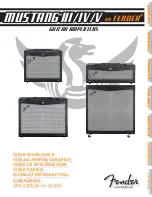
Issue 2
Page 2 of 8
SAFETY
I
MPORTANT
N
OTES
-
D
O
’
S AND
D
ON
’
TS
Ventilation
Always ensure adequate ventilation to the amplifier.
Do not obstruct the ventilation holes in the cover or base.
Should the amplifier exceed its safe operating temperature it will automatically reduce its volume to a
safe level thus allowing it to cool. Once cooled it will operate normally without manual resetting.
AC Power Input - Danger High Voltage
Only connect to an AC 50-60 Hz 230V supply using the lead assembly supplied or an equivalent type
with a suitable IEC connector.
Always ensure that the amplifier is earthed.
Always unplug the power before removing the top cover.
100V Loudspeaker Output - Danger High Voltage
Ensure that the loudspeaker connections are suitably protected and cannot be touched. Always replace
output plug insulated covers.
Always ensure that the total speaker load does not exceed the rating of the amplifier used.
If unsure use an impedance meter to measure the unknown load.
Using a multimeter selected to the resistance range ensure that the speaker line is not connected to
earth.
Moisture
Do not allow water to come in contact with the amplifier and its external connections.
Cable Types
Always ensure that the correct cable type is used for the signal level.
A twin screened cable should be used for balanced inputs operating at mic or line level. Zone
selection and access control cables do not generally require screening and should not share the same
screen as the balanced input.
Loudspeaker output cables should be rated in excess of 100V and the cross sectional area to suit the
load without excessive power loss.
Always ensure that output cables are kept as far away from input cables as possible reducing the risk
of instability.
Fuses
Always replace using the correct rating and type to ensure safe operation.


























